
* While the US cruise missiles of the 1950s saw no real combat, cruise missiles have now become a spearhead weapon for American military forces. This chapter describes the combat use of cruise missiles, and also discusses follow-on technologies.
* On 17 January 1991, the Tomahawk became the first American long-range cruise missile to be used in combat, when 52 were fired in a salvo at targets in Iraq from US warships in the Persian Gulf as part of Operation DESERT STORM, the campaign to evict Saddam Hussein from Kuwait. Other salvos followed, for a total of 288 Tomahawks launched in the campaign, with excellent results. Of the first 106 Tomahawks launched, at least 100 hit their targets. The missiles were fired by eleven US Navy surface ships and one submerged submarine, the LOUISVILLE.
American and British reporters in Baghdad watched as a Tomahawk zoomed above the street before making a right angle degree turn down the next street on the way to its target. British TV camera crews filmed five Tomahawks entering the Baghdad city limits, one after another. It has been suggested that strike mission planners deliberately plotted the flight path to pass by the hotel where the reporters were staying. Among the targets hit in Baghdad were the presidential palace, the Ministry of Defense, and a central communications center. Elsewhere in Iraq, targets included chemical, biological, and nuclear warfare research facilities. As mentioned, the US Air Force also launched 35 CALCMs at targets in northern Iraq, for a total expenditure of 323 cruise missiles in the conflict.
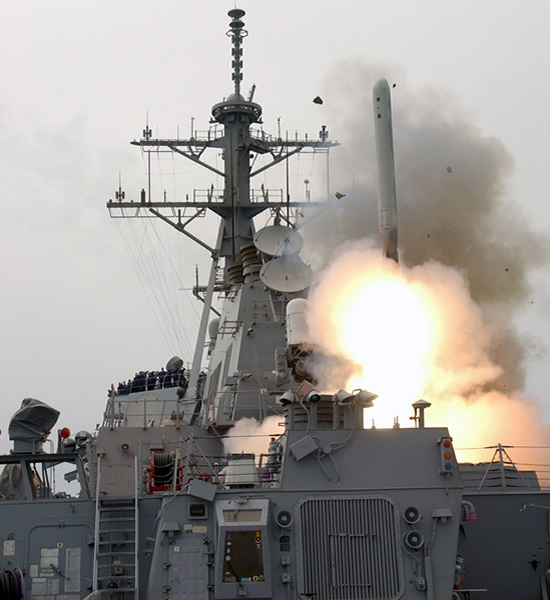
At least one TLAM-D was specially modified to provide a "soft kill" on Iraqi power stations, using an improvised warhead designated "KIT-2". Its submunitions dispensers were filled with spools of conductive fibers instead of bomblets, and dumped the spools over the power stations, temporarily shorting them out.
After their initial use in DESERT STORM, cruise missiles increasingly became a prominent weapon for the selective application of US military power:
CALCM was finally withdrawn in late 2019. From 1986 to 2012, a total of 622 AGM-86Bs were believed to have been converted to the CALCM configuration. CALCM has been replaced by JASSM.
Block IV / TACTOM production ended in 2015. There was some question as to whether any more Tomahawks would be produced, but the "Block V Tomahawk" went into production in 2020, with initial deliveries in 2021. The baseline Block V featured increased range, improved guidance and datalinks, and resistance to countermeasures. It then evolved into two subvariants:
Block IV Tomahawks will be updated to Block V spec, while Block III Tomahawks will be retired. The Tomahawk GLCM is also being revived. In 2019, the US pulled out of the INF treaty, citing with justification Russian non-compliance. The US Army is fielding GLCM again, with the BGM-109 Tomahawk forming half of the new "Typhon / Mid-Range Capability", along with a ground-launched version of the Raytheon SM-6 missile, in 2023. The Marines are similarly acquiring a ground-based Tomahawk capability.
The war in Ukraine and tensions with China boosted interest in cruise missiles, with several buys announced in 2023:
Sources tend to suggest that at least part of these buys will involved Block IV Tomahawks -- hinting that these export users may obtain Block IVs out of US stocks, for upgrade to Block V later.
There's a push towards "hypersonic" weapons, with speeds in the Mach 5+ range -- more on that later -- but subsonic cruise missiles have more range, are cheaper, and are adequate for most purposes. With refinements, there's no reason why the Tomahawk can't stay in service for decades. However, the Air Force is investigating a next-generation cruise missile under the "Long-Range Stand-Off (LRSO)" effort. The Navy is also investigating a replacement, the "Next-Generation Land Attack Weapon (NGLAW)".
LRSO is primarily intended for the nuclear strike role; details haven't been released, though test flights have been performed. It appears to be a subsonic weapon. NGLAW hasn't been flown yet, but appears to also be subsonic, and not intended for nuclear strike -- the US Navy seeing no use for nuclear-armed cruise missiles when the service has "boomer" submarines. Features of the two weapons apparently include:
It would not be too surprising if a further improved Tomahawk were selected for one or both requirements.
BACK_TO_TOP* The USAF has complemented ALCM with a lighter, more modern air-launched cruise missile for tactical attack. Development of the "AGM-158A Joint Air to Surface Stand-off Missile (JASSM)" was initiated in 1996. It evolved out of an earlier program, the "Tri-Service Stand-off Attack Missile (TSSAM)", that was canceled because of cost escalation. The emphasis in JASSM development was on limiting costs while retaining capability. After a competition between Lockheed Martin and McDonnell Douglas (now Boeing), Lockheed Martin won the full scale development contract in the spring of 1998. (Hughes' AirHawk, the cut-down version of the Tomahawk mentioned earlier, didn't make it into the finals.)
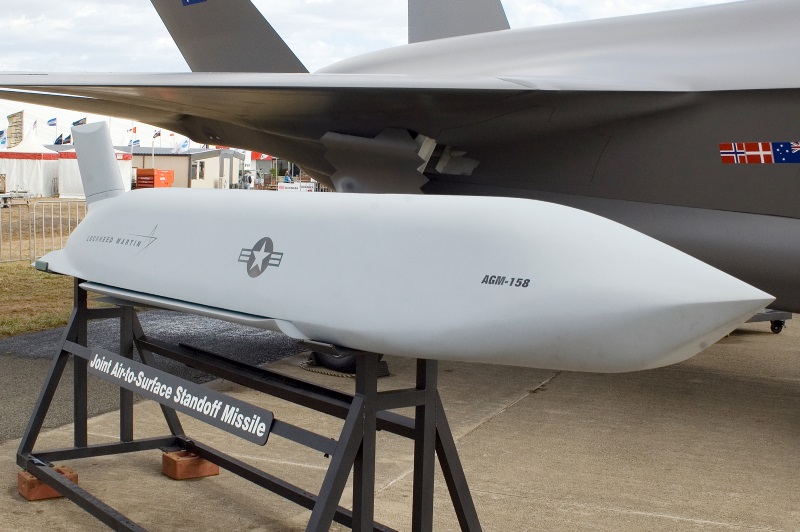
First powered flights of JASSM were conducted late in 1999, with first launch of a fully configured and armed missile in April 2001, and operational tests in 2002. Although there were some development problems that led to a stretchout of the program, initial production was authorized in early 2002, and the weapon is now in service. The USAF has obtained thousands of JASSMs.

As it emerged, JASSM had switchblade wings and a unitary penetrating warhead. It navigated using a GPS-INS guidance system and had an infrared seeker system to give it a CEP of 3 meters (10 feet). JASSM was powered by a Teledyne J402-100 turbojet engine and incorporated a high degree of stealth to improve its ability to penetrate enemy air defenses. It was fitted with a datalink to provide status and location data up to impact, assisting in bomb damage assessment. It may eventually incorporate a satellite datalink to perform this function.
___________________________________________________________________
AGM-158A JASSM:
___________________________________________________________________
length:
4.35 meters (14 feet)
total weight:
1,000 kilograms (2,200 pounds)
warhead weight:
450 kilograms (1,000 pounds)
speed:
subsonic
range at altitude:
320 kilometers (200 MI / 175 NMI)
___________________________________________________________________
The weapon has been qualified for launch on the B-52, B-1, B-2, F-16, F/A-18E/F, and the F-35 Joint Strike Fighter. The missile is only carried internally by the B-1 and B-2. It can also be carried and launched by the C-130 Hercules or other cargolift aircraft, through a "roll-on / roll-off" palletized weapon system, developed under the "Rapid Dragon" program. In 2006, the Royal Australian Air Force (RAAF) selected the JASSM, to be carried by RAAF Northrop Grumman F/A-18 Hornets, and eventually RAAF Lockheed Martin F-35 Joint Strike Fighters. Australia was the first export customer for JASSM; that was followed by orders from Finland, Poland, and Morocco, with other possible sales in the works.
The Air Force went on to obtain an "AGM-158B JASSM-ER (Extended Range)" with a range of over 900 kilometers (560 miles) and the same airframe, the increased range being partly obtained by use of the Williams F107-WR-105 turbofan. Formal go-ahead for development was given to Lockheed Martin in 2004, with initial test flights in 2006, low-rate production begun in 2012, and delivery of the first full-rate production batch in 2014. The Air Force plans to buy 1,400 JASSM-ERs, as part of the 4,900-unit total JASSM buy. The program was threatened by technical problems for a time, but the difficulties were ironed out. As mentioned above, first combat use, against Syria, was on 14 April 2018. Lockheed Martin has worked on an improved wing design for the JASSM-ER to "significantly" extend its range,
The company went on to develop an "AGM-158B-2 JASSM-XR (Extra Extended Range)" variant to double the range again to over 1,900 kilometers (1,200 miles), but could only be carried on bombers and heavy strike aircraft. The JASSM-XR design was stretched to 6.3 meters (20 feet 8 inches) and featured a fixed canard to ensure flight trim; apparently limited numbers are already in service. At the other end of the scale, the company has considered a shortened variant, the "JASSM-SR", that could be carried in the internal weapons bays of stealthy strike aircraft.
Lockheed Martin worked with the US Defense Advanced Research Projects Agency (DARPA) to develop a stealthy antiship missile derivative of the JASSM-ER, the "AGM-158C Long-Range Anti-Ship Missile (LRASM)". It was a fast-track demonstration program, featuring a multimode seeker developed by BAE Systems and a semi-armor-piercing warhead. Test flights began in 2013, leading to award of an initial production contract in 2017. Initial operational service was on the B-1 bomber in late 2018, followed by support on the F/A-18 Super Hornet a few months later.
An improved multi-mode seeker was introduced in later production. It appears the seeker system incorporated passive emitter sensing and is "smart", giving it an ability to deal with countermeasures. The LRASM also has a secondary ground-attack capability. The US and Australia are currently working to develop a surface-launched variant.
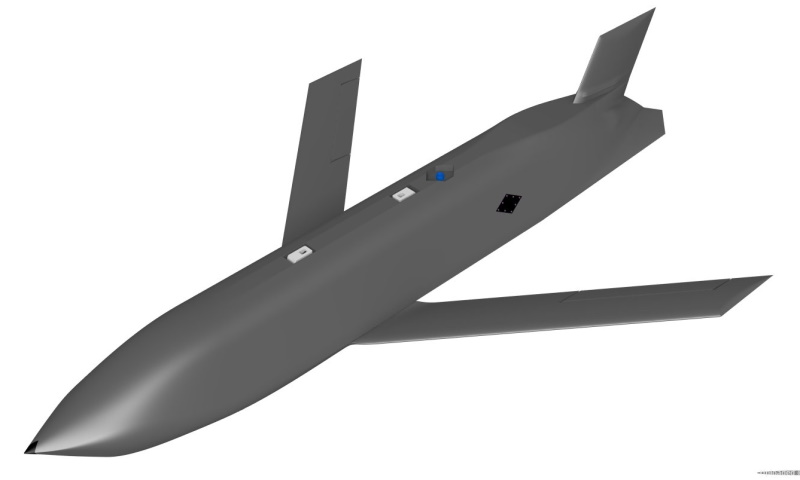
Other possible future developments of JASSM include:
Incidentally, Boeing flight-tested the CHAMP warload on a CALCM in 2012, with Raytheon being issued a contract in 2016 to integrate the warload into two more CALCMs. It is unclear if this was done for further evaluation or potential operational use.
BACK_TO_TOPNorway has a close military relationship with the USA, with the USA adopting Norwegian weapons -- including an antiship cruise missile, the Kongsberg "Naval Strike Missile (NSM)", which went into production in 2007. The Norwegian Navy was the first user, performing the service's first live firing in 2012. Poland signed up for a ground-launched version of the NSM, with initial operating capability achieved in 2013. Poland ultimately acquired 12 NSM launcher vehicles, with four missiles each.

As it emerged, the NSM was a stealthy missile, with its use of composite materials enhancing its stealth characteristics. It was launched by a solid-rocket booster and powered by a Microturbo TRI-40 small turbojet engine, with thrust given in the range of 2.5 to 3.3 kN (255 to 340 kgp / 560 to 750 lbf). It was fitted with a titanium-alloy blast-fragmentation warhead, featuring a smart fuze.
___________________________________________________________________
KONGSBERG NSM:
___________________________________________________________________
wingspan:
1.4 meters (4 feet 7 inches)
length:
3.95 meters (12 feet 11 inches)
total weight:
410 kilograms (900 pounds)
warhead weight:
125 kilograms (275 pounds)
speed:
high subsonic
range at altitude:
> 150 kilometers (95 MI / 80 NMI)
___________________________________________________________________
The NSM's guidance system, which used both GPS-INS and terrain tracking, allowed it to fly over and around landmasses, travel in sea skim mode, and then make random maneuvers in the terminal attack phase, with targeting using by an imaging infrared seeker, it seems with "smart" target recognition capabilities that allowed it to attack specific sections of a ship. It also featured counter-countermeasures to penetrate adversary defenses.
The US Navy and Marines obtained the NSM as the "RGM-184A", with the Navy operating it on some frigates and other smaller warships. The Navy does not see the NSM as replacing the Harpoon. The Marines are deploying it on the "Navy-Marine Corps Expeditionary Ship Interdiction System (NMESIS)", which will to become operational in 2023. NMESIS is based on a Joint Lightweight Tactical Vehicle carrying two missiles and a fire-control system. NMESIS is not only intended for ground launch, but also from the Light Amphibious Warships being developed by the Navy.
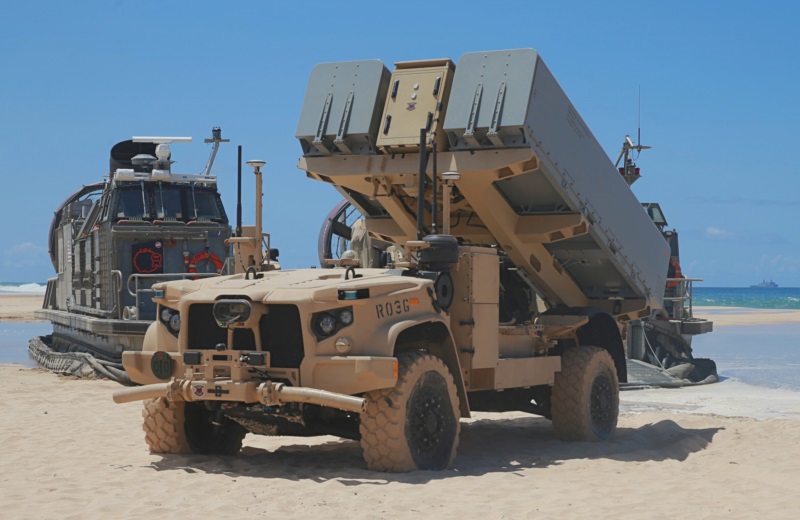
Canada, Germany, Malaysia, and Romania are acquiring the NSM. Kongsberg is collaborating with Lockheed Martin to develop a version for Lockheed Martin's F-35 Joint Strike Fighter, with this variant designated the "Joint Strike Missile (JSM)" and development work funded by both Australia and Norway. The primary change was rethinking the missile's airframe to allow it to fit into the F-35's internal weapons bays -- one noticeable difference being that the belly air intake was replaced by intakes on both sides. It had a larger warhead, extended range, and was able to attack both sea and land targets. Apparently, the NSM could hit land targets as well, but it wasn't really designed to do so.
Flight tests of JSM began in 2014, with introduction to service in 2023. F-35 users such as Australia, Finland, and Japan are interested in acquiring the JSM. Kongsberg is also considering a variant for shipboard VLS launch.
* The McDonnell Quail decoy drone established US military interest in decoys, leading to an effort to develop an improved decoy. In 1996 DARPA, with USAF encouragement and cooperation, initiated a competition for a "Miniature Air-Launched Decoy (MALD)" demonstrator.
A number of aerospace firms responded. One strong contender for the award was a decoy version of the Lockheed Martin Vought "Low-Cost Autonomous Attack System (LOCAAS)", a small anti-armor cruise missile with search-and-destroy capabilities then in development. However, Ryan, which had been bought out by Northrop Grumman in 1999, won the DARPA MALD award with an entirely new design. LOCAAS, incidentally, was never fielded.
The Northrop Grumman "ADM-160A", as its MALD demonstrator was eventually designated, was a slender machine powered by a tiny Hamilton Sundstrand TJ-50 turbojet. The demonstrator was 2.3 meters (7 feet 7 inches) long, had pop-out wings with a span of 65 centimeters (25 inches), and a launch weight of 40 kilograms (88 pounds). Three of them could be carried on a single stores pylon using a triple ejector rack. The MALD demonstrator was designed to fly at high subsonic speed for about 20 minutes. It used a programmable waypoint guidance system with GPS navigation, and had a programmable active radar enhancement payload that in principle could allow it to impersonate almost any combat aircraft. The USAF planned to buy about 1,500 MALDs, and the US Army and the British also expressed interest in the weapon.
The MALD program seemed to be going well, with initial test flights in 1999, and received very good press. Another demonstrator program was spun off the MALD effort, in the form of the "Miniature Air Launched Interceptor (MALI)", a supersonic version of the AGM-160 intended to shoot down cruise missiles. It featured a new, uprated Hamilton Sundstrand TJ-120 engine, streamlined nose, and wings with greater sweep. An initial MALI test flight took place in late 2001.
There was also interest in a ground-launched version of MALI with a solid-rocket booster; an expendable jammer variant of the MALD, known as "MALD-J"; and a lightweight cruise missile derivative of the MALD. However, much to almost everyone's surprise, the MALD demonstrator program was canceled in January 2002 before it had run its course. DARPA, which only runs relatively brief investigation programs, had turned over the effort to the Air Force, and then the program ran into what appears to have been dissatisfactions and second thoughts.
* The Air Force decided that the MALD demonstrator didn't have the range or endurance to be the decoy the service wanted, and would not have been a good platform for other roles. That meant committing to a more sophisticated and expensive decoy. However, the MALI demonstration program was completed, with a MALI demonstrator achieving Mach 1.1 during test flights in late 2002. The USAF restarted the competition, specifying a new decoy with an endurance of 45 minutes or more at 10,670 meters (35,000 feet) and 20 minutes or more at 915 meters (3,000 feet). Of course, the service realized that a more capable decoy was going to be more expensive, and adjusted the required pricetag upward accordingly.
Raytheon won the award in the spring of 2003. The configuration of the Raytheon design was originally very similar to that of the ADM-160A, to the extent that they could be confused if not seen side-by-side, but after the award of the contract the design evolved to a new configuration that featured a fuselage with a trapezoidal cross-section to make carriage easier. The Raytheon "ADM-160B MALD" was much heavier, with a weight of 113 kilograms (250 pounds), a length of 2.84 meters (9 feet 7 inches), and a wingspan of 1.71 meters (5 feet 7 inches) -- with the wings extended to a straight position for range and endurance, instead of swept for speed.
The ADM-160B was powered by a Hamilton Sundstrand TJ-150 engine, an uprated derivative of the TJ-50 of the original demonstrator, and gave the decoy a top speed of Mach 0.91 at 12,200 meters (40,000 feet). Hamilton Sundstrand also provided an alternator and power control system to run the drone's avionics, which included a GPS-based navigation system and a Raytheon-developed active radar signature enhancement payload that could be programmed to mimic different classes of aircraft. A flight profile could be programmed into the MALD by the carrier platform before launch.
Initial powered flight of an ADM-160B was in June 2007; following successful evaluation, low-rate production began in late 2008, with introduction to service in 2010.
The Air Force remained ambivalent about the MALD-J jammer variant for a time -- the abrupt collapse of the original MALD program no doubt left program officials cautious about overselling its successor -- but the USAF finally awarded Raytheon a development contract for the "ADM-160C" MALD-J in the spring of 2008. MALD-J development was straightforward, MALD having been designed with a range of payloads in mind, and the first all-up test flights of MALD-J were performed in early 2010. Production began in 2011, with introduction to service in 2012.
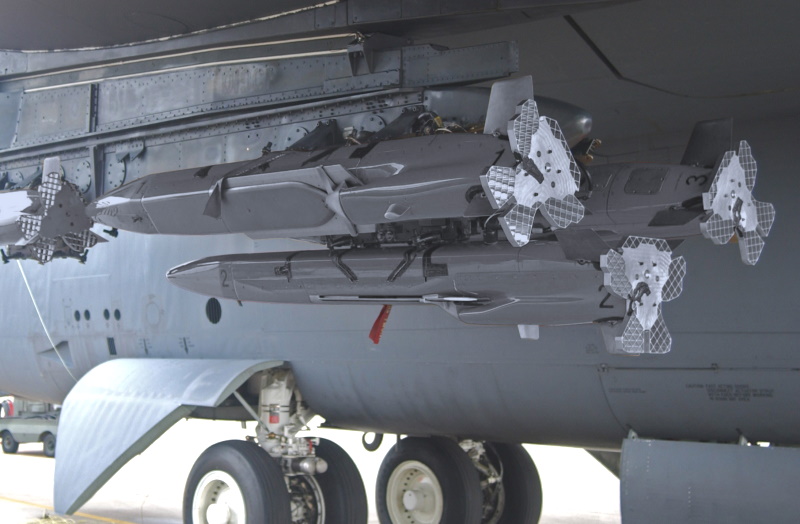
In 2011, Raytheon performed test launches of MALD dummies from a C-130 Hercules cargolifter, using the "MALD Cargo Air Launch System (MCALS)" developed by the company. MCALS is a rack that can hold up to 6 MALDs and is mounted on a standard cargo pallet; using MCALS, a cargolift aircraft can sequentially deploy all the MALDs out the open rear cargo door. MALD was qualified for carriage on the Reaper drone as well. An upgraded version, designated "MALD-X", with "X" for "eXpanded" -- to feature the ability to carry different electronic warfare systems, plus a low-altitude capability and an enhanced datalink – has been introduced, with the US Navy obtaining it as the "MALD-N".
The only foreign user of MALD is Ukraine, which obtained them in their war against Russian invaders. Absolutely nothing was said about them, they only came to light when the Russians showed off pictures of MALDs that had crashed.
Raytheon has also investigated a "MALD-V", the "V" possibly standing for "versatile", a "truck" version of the vehicle with an empty payload bay for accommodating a sensor, communications relay, or other payload. The payload bay has dimensions of 60 x 25 x 25 centimeters (24 x 10 x 10 inches) and payloads can weigh up to 23 kilograms (50 pounds). Use of the MALD-V for reconnaissance tends to imply a recovery scheme, but Raytheon has been mum on that issue.
The future evolution of MALD is unclear. Raytheon did propose a "loitering attack munition" named "Hammer" based on MALD. It would be ground-launched, make its way to a preprogrammed target area, and then fly in loops -- remaining under control via datalink, and attack a target on demand. It didn't happen. It may end up being more sensible to develop a modernized replacement than to update MALD further.
The Air Force Research Laboratory has worked on a low-cost, subsonic cruise missile named "Gray Wolf". It was defined as a relatively small weapon, datalinked and networked to permit "swarm" operations, for example to overwhelm and suppress adversary air defenses. Lockheed Martin and Northrop Grumman both developed demonstrators, with flight tests performed. A photo of the Northrop Grumman offering revealed a cruise missile of conventional configuration, somewhat like MALD, but with low-mounted switchblade wings.
The demonstrators were powered by an expendable TDI-J85 turbojet, from Technical Directions INC -- a subsidiary of drone-maker Kratos -- with max thrust of 890 N (90 kgp / 200 lbf). Gray Wolf, at last notice, was a technology development program, with no commitment to producing an operational weapon, and the expendable engine being a significant component in the effort. If fielded, it could be used as a decoy to follow on from MALD.
* As a footnote to small cruise missile development ... the US Navy did considerable work on a relatively small, in principle cheap cruise missile under the "Affordable Weapon Systems (AWS)" program. The goal was to design a new weapon that will be an order of magnitude less expensive than the Tomahawk, using off-the-shelf components as much as possible. A preliminary development contract was awarded to Titan Corporation, later part of L3, in 2002; following construction of demonstrators, a bigger contract was awarded to Titan in 2005 for a test and evaluation batch of 85 AWS missiles. Test flights were conducted, but then the program disappeared.
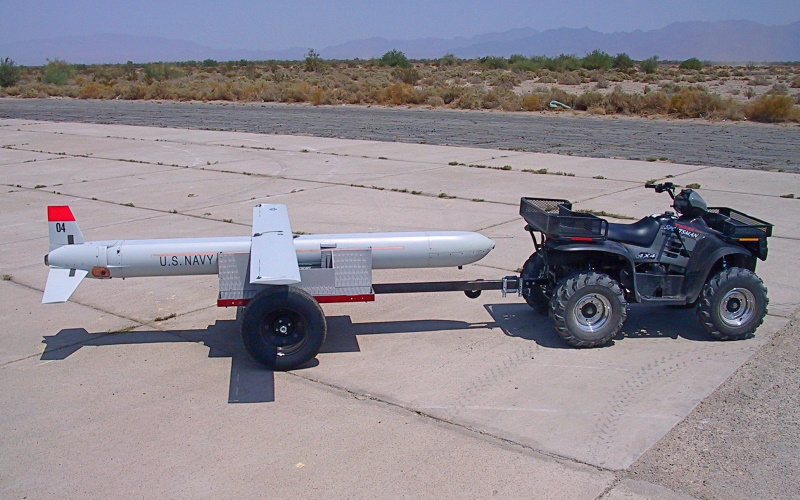
Pictures of the AWS showed a weapon that looks very much like a scaled-down "toy" Tomahawk, launched by a small solid-rocket booster with paddle-type tailfins. It was powered by an SWB Turbines SWB-65 turbojet with 290 newtons (30 kgp / 65 lbf) thrust and was fitted with a unitary blast / fragmentation warhead -- though a payload of three BLU-108/B Sensor-Fuzed Weapons, each carrying four "Skeet" submunitions, was considered as an alternate warhead. The AWS was GPS-guided, featured a datalink system, and had a loitering capability.
___________________________________________________________________
TITAN AWS:
___________________________________________________________________
diameter:
34.3 centimeters (13.5 inches)
length:
3.28 meters (10 feet 9 inches)
launch weight:
334 kilograms (737 pounds)
warhead weight:
90 kilograms (200 pounds)
max speed:
460 KPH (290 MPH / 250 KT)
range:
1,530 kilometers (950 MI / 825 NMI)
___________________________________________________________________
Why the AWS was abandoned is unclear; few involved in dead-end programs are inclined to say much about them. It might have simply been done in by changing requirements -- but there's also the unfortunate tendency of "cheap and dirty" weapon systems to turn out to be nowhere near as cheap as expected. It simply may not have been much cheaper than the Tomahawk, while being less capable, with interest shifting to even smaller cruise missiles.
BACK_TO_TOP* As mentioned earlier, the US military is investigating very fast cruise missiles. In the summer of 2002, DARPA awarded Boeing a contract to develop a demonstrator for a Mach 6 cruise missile under the "HyFly" program. The objective was to build a missile that could be launched from surface ships, submarines, or aircraft to attack mobile targets after they have been spotted and before they have time to move.
The HyFly demonstrator was powered by a "dual combustion ramjet" engine. A traditional ramjet can operate at speeds up to Mach 5 at most, but above that speed the airflow in the engine becomes supersonic. (The speed of sound under high pressure and temperature conditions inside a jet engine is much greater than it is in the outside air, and airflow is slowed inside the engine as well.) It is difficult to mix and burn fuel in a supersonic airflow, at least in an engine of any reasonable length -- the task being compared to "lighting a match in a hurricane, and keeping it lit."
Experimental "supersonic combustion ramjet (scramjet)" engines are being developed that can operate at speeds potentially as high as Mach 25, but they require fast-burn fuels that are inconvenient or unsafe, or feature a relatively bulky fuel system that uses engine heat to "crack" conventional jet fuel down into smaller, more rapidly burned molecules.
The dual combustion ramjet for HyFly was a compromise. It operated around a core "ramjet combustor" with its own set of inlets, in which the intake air was slowed to subsonic speeds, mixed with fuel, and burned. However, the outlet air from the core ramjet was mixed with supersonic air in a "supersonic combustor" with another set of inlets, and burned more completely. A dual combustion ramjet can operate at up to Mach 6.5; it is cheaper and more compact than a scramjet. Since ramjets can't generate static thrust, the HyFly demonstrator's dual combustion ramjet had to be brought up to speed by a booster rocket. The airframe was made with a ceramic composite matrix (CMC) to tolerate high friction heating.
DARPA initially conducted the program with US Naval Research Lab backing, though the Navy dropped out. The development was performed by the Boeing Phantom Works, with Aerojet as the engine contractor. Following airdrops of inert airframes and booster tests from 2005, the initial all-up flight was in September 2007, followed by a second flight in January 2008. Neither of the first two flights was a complete success, though useful data was obtained.
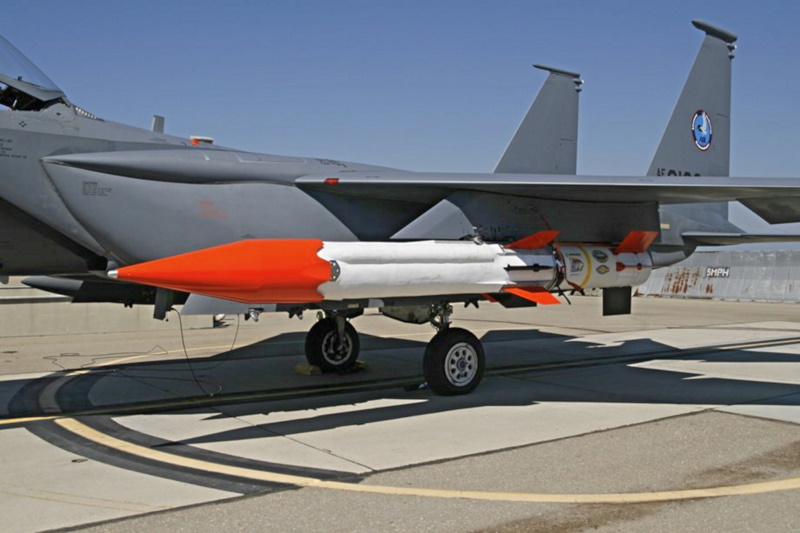
The projected operational derivative of HyFly was envisioned as being built of titanium and would have a "slip-in" launch booster, fitted inside the missile and discarded after burnout. It would have GPS-INS guidance and possibly a terminal seeker, and submunition or unitary payloads. A ship or submarine launched weapon would be about 6.5 meters (21 feet 4 inches) long, weigh 1,725 kilograms (3,800 pounds), and have a range of 1,100 kilometers (600 nautical miles). It didn't happen, the project being abandoned in 2011.
However, Pentagon work on high-speed missiles has accelerated from 2017, thanks to Russian and Chinese development work on hypersonic strike. The USA has worked on a bewildering set of projects, along two lines: one focused on "boost-glide" technology, in which a hypersonic gliding warhead is launched by a solid-fuel missile; and scramjet weapons.
Boost-glide technology is not directly relevant here. US scramjet cruise missile efforts are rooted in the "X-51A Waverider" -- a hypersonic test vehicle with a scramjet engine, launched off a B-52 and accelerated to operational speed with a solid-rocket booster. The program was conducted by the USAF, DARPA, the US National Aeronautics & Space Administration (NASA), Boeing, and Pratt & Whitney Rocketdyne. After three initial flights that didn't meet spec, the X-51A finally was able to sustain Mach 5+ flight for over 210 seconds in 2013.
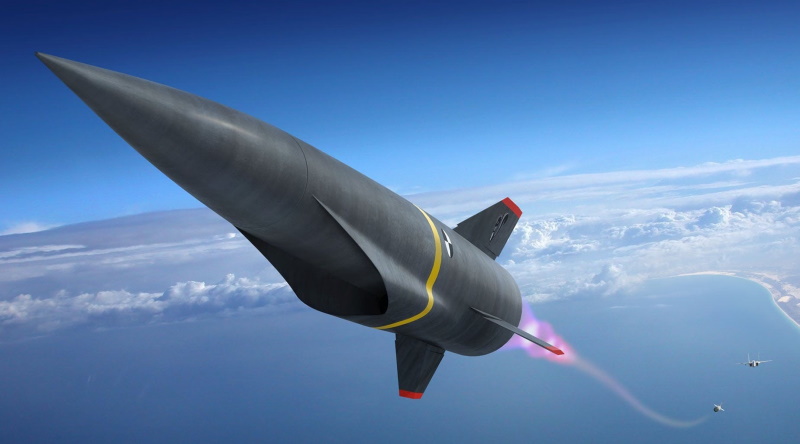
DARPA has followed the X-51A with an experimental project, the "Hypersonic Air-breathing Weapon Concept (HAWC)", conducted in collaboration with the USAF, which funded demonstrators built by Lockheed Martin-Aerojet Rocketdyne and Raytheon-Northrop Grumman Innovation Systems teams. There were a number of test flights, the program ending in 2023 with a flight at speeds greater than Mach 5, altitude above 18,300 meters (60,000 feet), and range more than 550 kilometers (300 nautical miles). The HAWC effort is being followed by a "More Opportunities HAWC (MOHAWC)" effort to refine the technology towards an operational system -- it seems as a component of a USAF effort to develop a "Hypersonic Attack Cruise Missile (HACM)".
Similarly, the US Navy is working on an air-breathing "Hypersonic Air-Launched Offensive Anti-Surface (HALO)" antiship missile, to replace LRASM and be fielded before 2028. However, the US hypersonic weapons development drive remains in a confusing state of flux.
BACK_TO_TOP* This document was derived from a comprehensive survey of cruise missiles of the world, with the first version introduced in 2000. It turned out to be a bad idea; it was unwieldy, patchy, and hard to maintain, so I deleted it in 2014. I then decided that a more selective read, focused on US cruise missiles, would work better, and would also be easy to convert into an ebook. The new document was released in 2016, with an updated version incorporating antiship missiles added in 2022.
* Sources include:
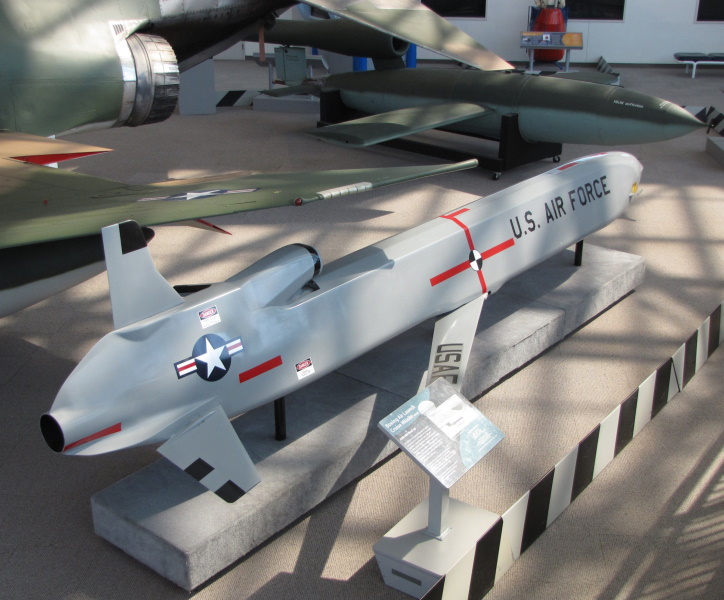
* Illustrations details:
* Revision history:
v1.0.0 / 01 may 16 v1.0.1 / 01 apr 18 / Review, update, & polish. v1.1.0 / 01 mar 20 / More on scramjet cruise missiles. v2.0.0 / 01 may 22 / Illustrations update. v2.1.0 / 01 apr 24 / Review, update, & polish. (+)BACK_TO_TOP
